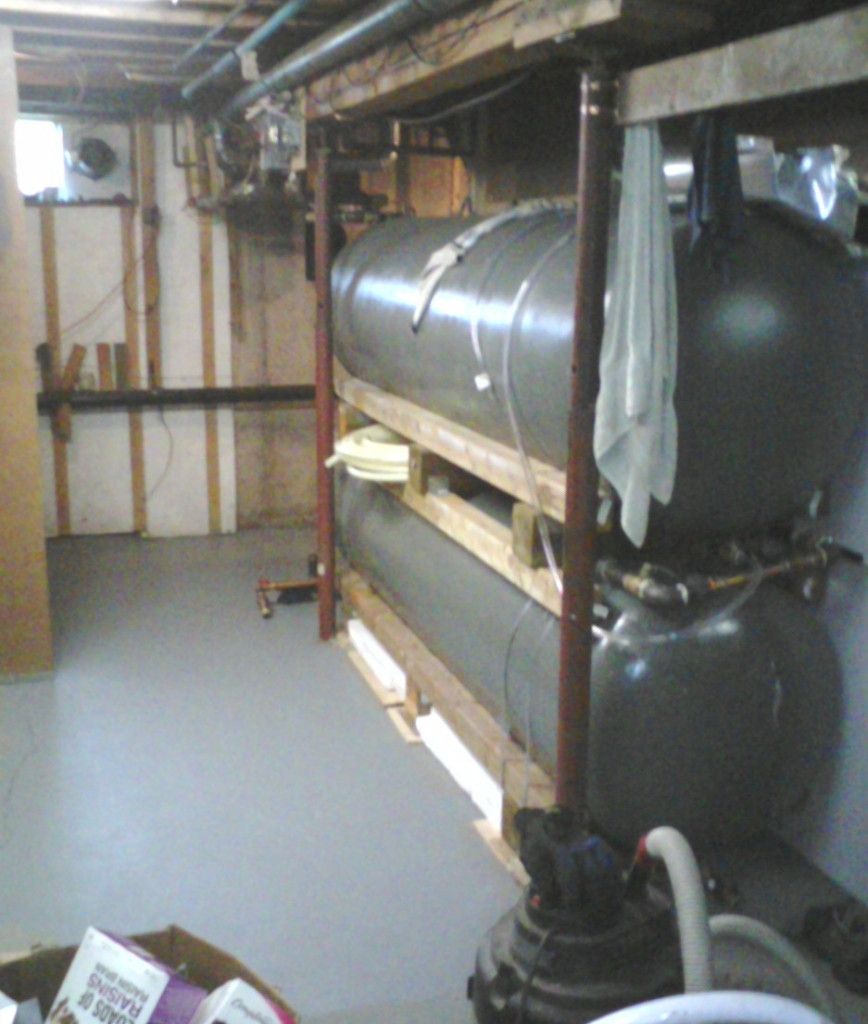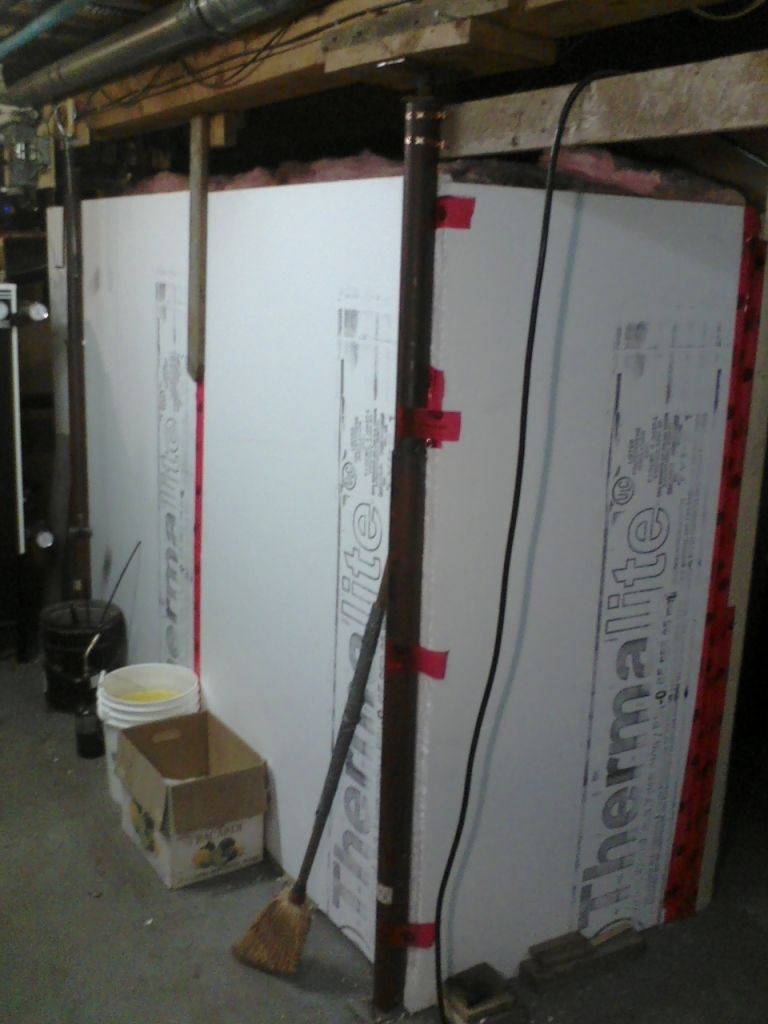I won't go into too much detail, but I have a few pics from when I was installing (poor cell phone quality).
Here's the boiler:

Here's the tanks before the boiler was set in place:

With a quick temporary insulating job:

These setups are good for basements - heat rises so can make use of natural convection for things like a power outage situation. If I didn't have a basement & still wanted a boiler, I would put it all in an outbuilding along with my entire winters wood. (Also makes for a cozy shop or man cave if built big enough). That would eliminate dealing with steps/stairways. (I have a walk out to get the wood in). With a house the size of what you're planning, you could likely burn every couple of days & keep warm. Gasifiers + storage are batch burning setups, meaning you start a fire when storage is depleted, and stop burning when it is charged - so you need to make a new fire every day (or every second day maybe in your case). But I only have a fire actually burning about 6 hours a day in the middle of winter. Also, mine is natural draft - it's the only natural draft gasifier I have seen so far. There are no draft controls at all on it - it simply burns until it runs out of fuel. Fits right in with my KISS hankerings. Not exactly cheap - I did it all myself, except for wiring in the backup electric boiler & new water heater, and think I am in the $15k CAN range. That's all in & covers wood boiler, electric boiler, water heater, tanks & welding on them & insulating them, all pumps & piping & fittings (that stuff adds up), DHW exchangers, taxes, and customs/freight/$ exchange due to living on the wrong side of a border.
Thanks for the reply. Those look like pretty big tanks, how many gallons? Without a basement, such a system would have to be installed with either a pre-planned and buried tanks under the house before it is built, or somewhere outside the house. It would be possible to install them in the planned garage, but would take up to much space I am thinking. You mentioned welding. To my mind, this sort of throws a red flag. I cut and welded on a 40 hotwater heater once to install a copper heating coil. The tanks are glass lined. It was installed in the attic of a house and connected to a solar water heater. It worked well for a while, but the tank started rusting and leaking around the welds after just a couple of years.
I have found that solar heating water works very well, but there are so many ways to use solar, and different corners of the world, that results vary greatly. The system I help install was all home made. Copper tubing was used in the collectors. At first there was 4 2x4ft panels connected together on the roof of the house. The copper tube was connected to the tank that I had cut and welded on. The tube inside the tank was the heat exchanger and connect to the house propane tankless water heater. The water for the solar collectors was isolated so as to not contaminate the portable water supply.The gas was turned off the tankless heater for testing of the system. It was late Dec, early Jan when the system was installed and tested. 20*f-30*f temps outside. What we found was that the hot water became way to hot, especially with small children in the house. I forget the high temps, but just say it would scald you if you werent really careful. We took two of the solar collectors off line and where able to get the temps down to 130*f. He is still running that system and it been several years since we installed it. He did have to replace the storage tank because of leaks. I dont know what he replaced it with.
I have seen 4x8 solar panels that would generate 180*f temps, right out of the collector. Way to hot for a direct connection to my sinks or bathtub. One would have to have a pretty large storage tank to keep the water temps down, but with a large storage tank, it should insure a almost endless supply of hot water, even with several days of cloudy weather. I would think that with a large enough collector and adequate hot water storage, a person should be able to get a lot of heat for heating the home. No ideal what such a system would cost or how to go about installing such a system. I am thinking a radiant floor heating system, and am actually considering it. Any heat I can get without running the electric meter or burning wood would be a bonus.




